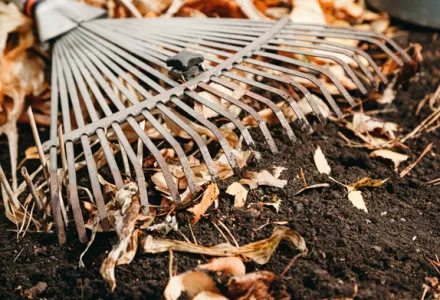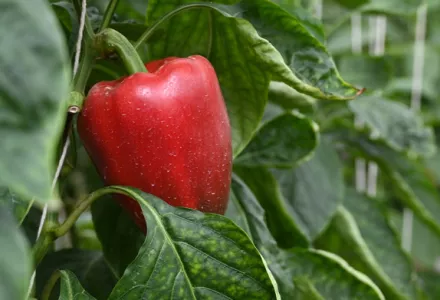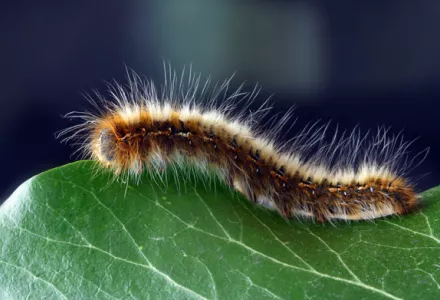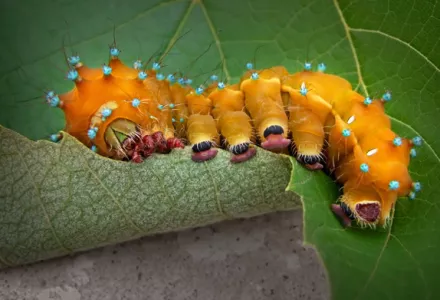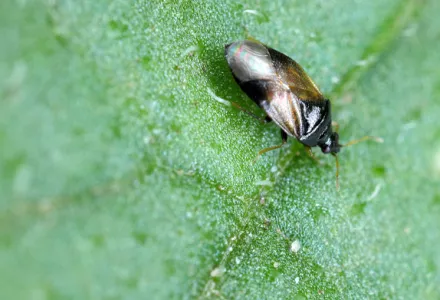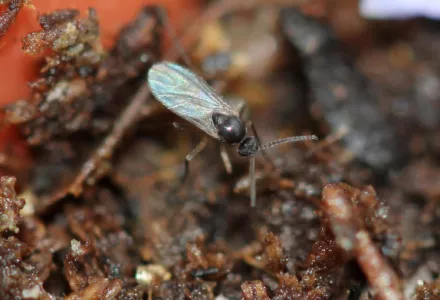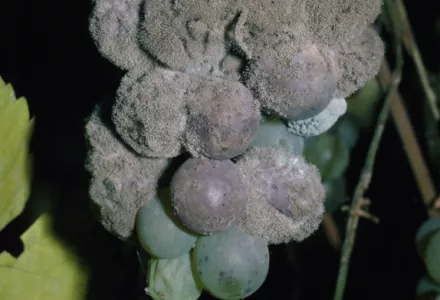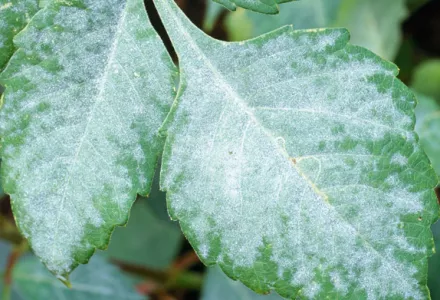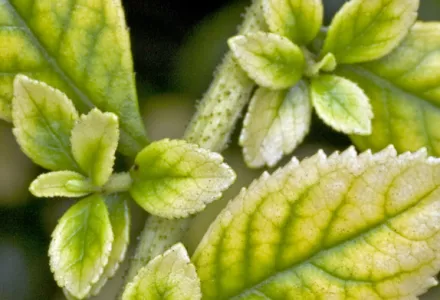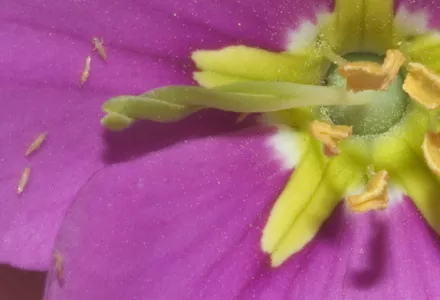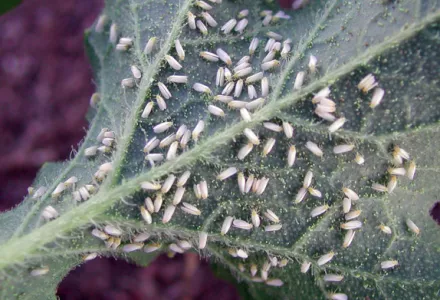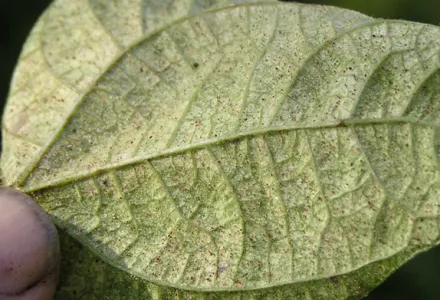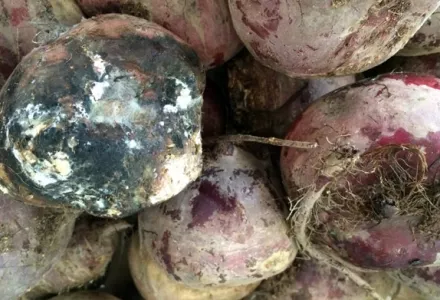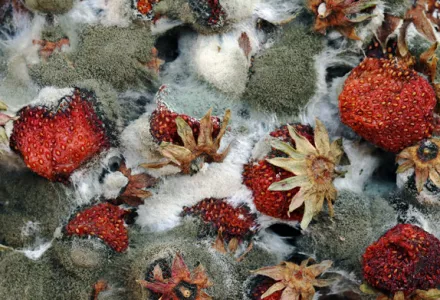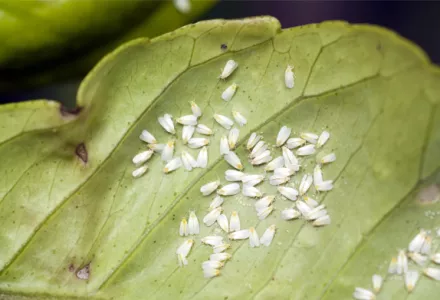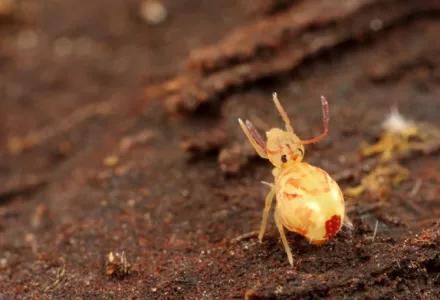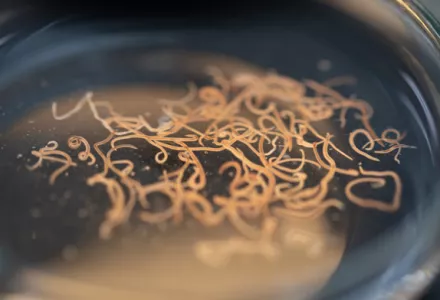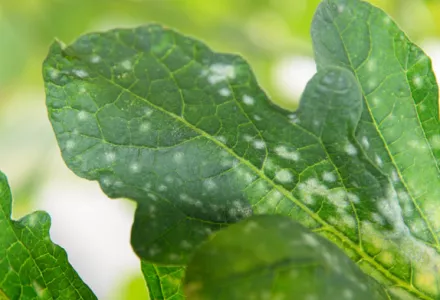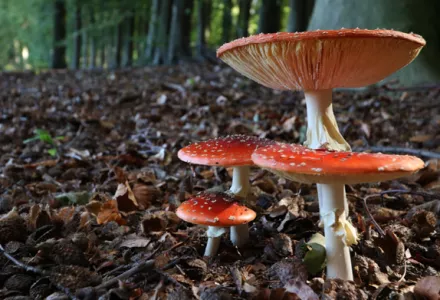With cooler nights, dewy mornings, and autumn underway, we’ve needed to keep an eye out for fungal infections that thrive in these conditions. In particular, let’s take a closer look at Botrytis cinerea, the unwelcome guest to our fall bounty.
The species name Botrytis cinerea is derived from the Greek word ‘botrys’, which means ‘cluster of grapes’ and the Latin word ‘cinerea’, referring to the ashy color of the mold. When viewed under a lens, the structures carrying the fungal spores do indeed look like bunches of grapes. Botrytis cinerea is a necrotrophic fungus, meaning that it kills its host while consuming its nutrients. It is also saprophytic, meaning that it can feed on non-living organic debris. This means that it can also affect crops that have already been harvested! Here’s an overview of Botrytis cinerea from its beginning stages till its dark end and some guidelines for keeping it out of your space.
Life cycle
Botrytis infection often begins by spreading from infected plant debris left from the previous crop or introduction of infected plant material. Relatively high humidity is key for fungal growth. Botrytis will grow in temperatures as low as 30°F and 75°F is optimal. Botrytis prefers flowers and fruits, but it can also grow on stalks, leaves and seeds. Infected seeds carry the fungus, which only starts to grow and develop when conditions are suitable.

A drop in humidity and increase in temperature is needed for the fungal spores to release and these conditions usually are present during the early morning. Thereafter the spores can move easily in the air, by water, or by insect till they land on their next host’s leaves or stem. There, they germinate and begin to attack.
Once the spore has landed, it requires sufficient moisture and nutrients to germinate. When a spore germinates, germ tubes emerge from the spore. At the end of these tubes there is a widening, called an appressoria, which forms an infection peg that enters the plant tissue. The peg is not able to penetrate the plant tissue instantly. It first needs to secrete certain enzymes, which help to eliminate the plant’s first cellular barrier (the cuticle - the waxy outermost layer of the plant). The cuticle of healthy tissue is often very tough, so the fungus is more likely to penetrate physically damaged, pest wounded, weak or senescent (aging) tissue. Once it has penetrated through the cuticle, the fungus continues to secrete enzymes in order to move through the next layer of pectin cells.

The plant’s immune system itself also affects the speed at which infection occurs. The plant’s defenses are sometimes lower in the autumn, which means that the half-dormant Botrytis can severely strike the plant. This is part of why some growers have problems with Botrytis at the end of the growing season, along with higher levels of humidity.
The tissue on which Botrytis develops becomes dark and sometimes soft, and, in time, a layer of furry gray mold will form on these dark spots. The mold grows on dying and dead plant material but can also affect living cells. Usually, a Botrytis infection only becomes visible after two or three weeks from infection, which initially is not visible.
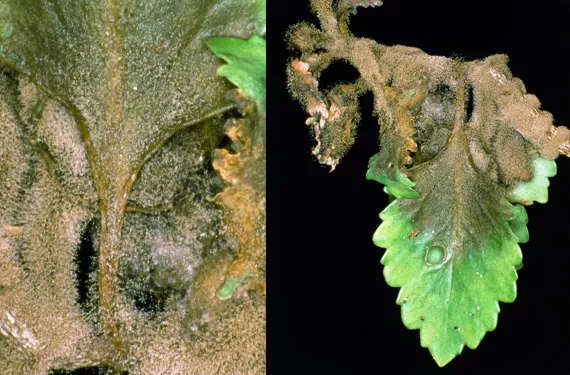
Control methods
During cultivation
It is very important to get rid of any parts of the plant that are infected with Botrytis and properly dispose of them away from your production site. Before you go back to the growing area, wash your hands and change your clothes. The whole point is to minimize potential spread of the spores, because even the slightest contact will send clouds of gray spores into the air that can land on otherwise healthy plants.
It is important that the plants have adequate spacing and air flow. Good ventilation is essential in order to maintain slightly lower humidity around the leaves and flowers. For outdoor crops, growing under tunnels allows for plant coverage and prevents plants from getting wet during rain events. It is also important to be vigilant against insect pests that can cause chewing damage the cuticle, since this allows Botrytis to infect the plant more easily.
Biological control
Several microorganisms have shown to be successful in controlling B. cinerea in a wide variety of crops. Clonostachys rosea (= Gliocladium roseum) is a fungus that is used to combat and prevent Botrytis attacks because of its ability to suppress the production of spores. Some nematode species have also been used to control gray mold effectively. Certain strains of Trichoderma harzianum have been shown to be helpful in some crops. And some bacteria of the genus Bacillus have been identified which are capable of producing substances that inhibit the growth of B. cinerea, which are useful when applied to infected flowers and fruits and the soil to prevent damping off.

However, the effectiveness of these organisms depends on various factors such as environmental conditions and the developmental stage of the crop. For crops like strawberries and blueberries, bees have also been used successfully to improve the dispersion and efficacy of these antagonistic bacteria. If a certain amount of beneficial microorganisms is placed in the beehive, they are then distributed around the crop by the bees.
Natural extracts
Many plant extract preparations are marketed primarily to prevent the attack and development of B. cinerea. Good results have been achieved with extracts of thyme, citrus seed, oregano, mint, garlic and pepper, to name but a few. The components of these extracts are diverse, but many act by inhibiting the germination of spores or preventing the development of the mycelium.
Noble rot – where Botrytis is actually a good thing
While Botrytis is a very common mold that is often damaging, Botrytis is not always harmful. For example, when ripe wine grapes are infected, the skin becomes more porous and more water can evaporate from the fruit. That benefits the sugar content and produces wine with a better bouquet. This is also known as ‘noble rot’.
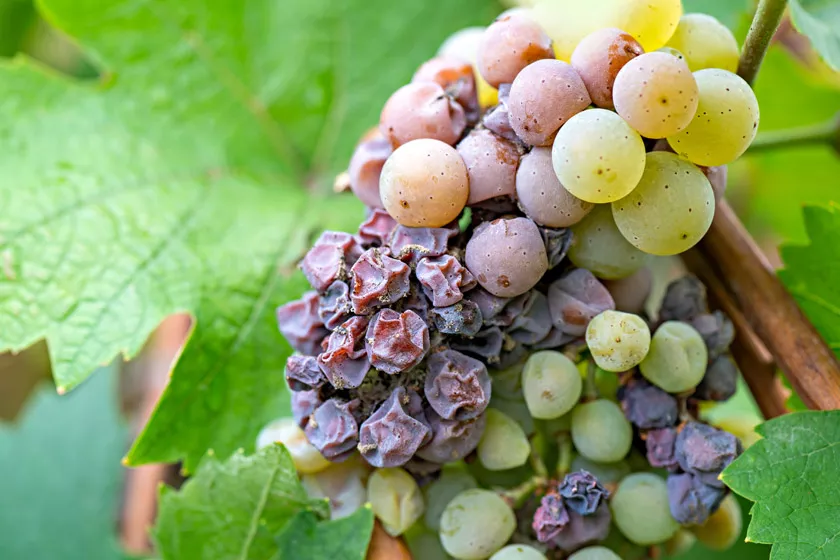
To produce some of the best ‘Botrytis wines’, the grapes are literally handpicked one by one, so that only those grapes that have been infected by the parasitic mold are selected. In some cases, then, Botrytis can be a helpful for horticulturists. And in nature, molds certainly are helpful. We have Botrytis to thank for the fact that all the leaves which fall from the trees in the autumn get tidied up so efficiently. And that means that the circle of seasons can continue onward.
Content Reference:
- Garcia, Inaki. 2016 February. Botrytis Cinerea: a highly infection crop killer – in detail. Pest & Diseases. CANNA.

